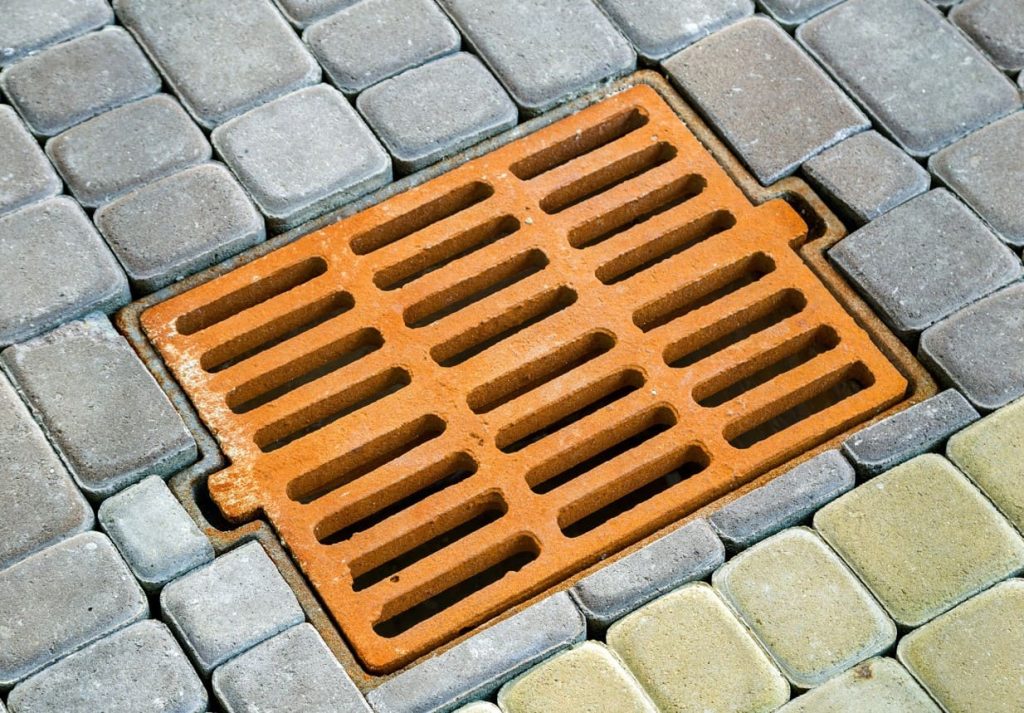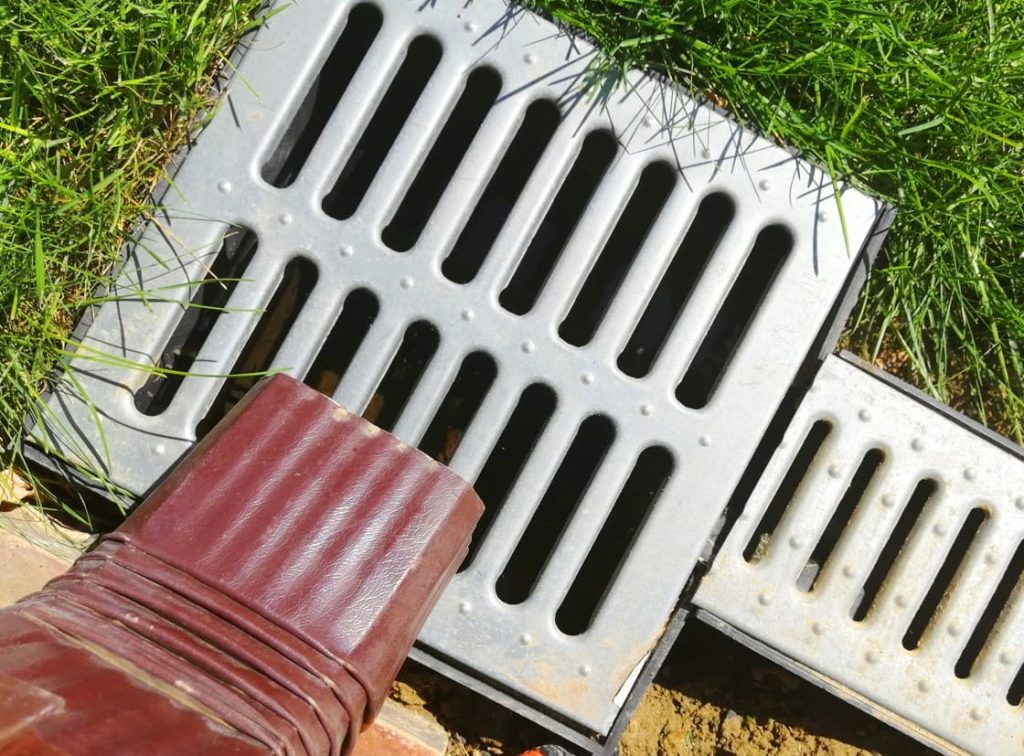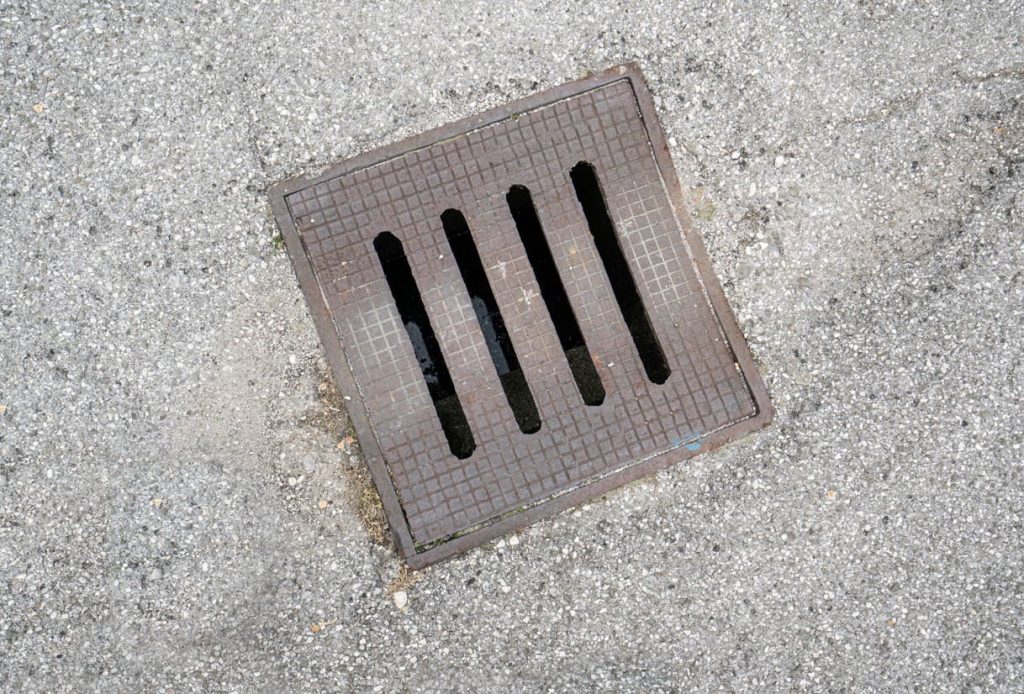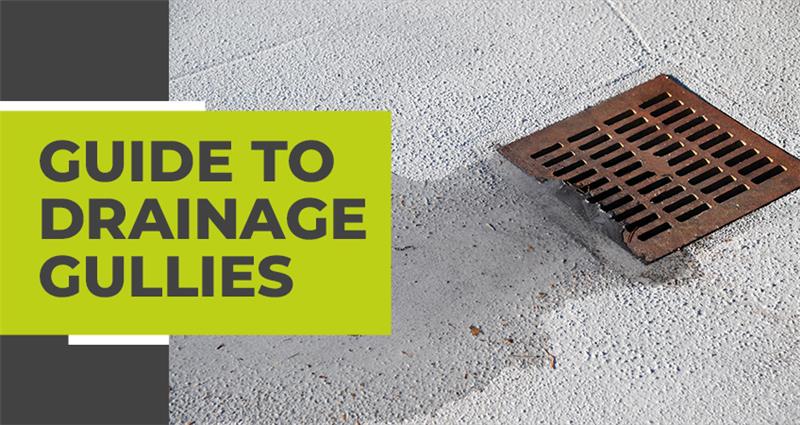Picture this: you’re standing in your garden after a heavy downpour, watching water pool around your property like an unwanted moat. Or perhaps you’ve noticed an unpleasant whiff every time you walk past that innocuous-looking grid by your kitchen window. These scenarios might seem unrelated, but they both point to one crucial component of your home’s drainage system that often goes unnoticed until something goes wrong—the humble drainage gully.
At Any Drains Direct, we’ve seen our fair share of drainage disasters that could have been prevented with a better understanding of these essential fixtures. From our base in Kent, we’ve been helping homeowners and businesses tackle everything from blocked drains to complete system overhauls for years. Our team of drainage experts has witnessed firsthand how proper gully knowledge can save property owners from costly headaches down the line.
This comprehensive guide will demystify drainage gullies, exploring their types, functions, and practical applications around your property. Whether you’re dealing with a soggy garden, mysterious odours, or simply want to understand what’s lurking beneath those grids dotted around your home, we’ve got you covered.
What are drainage gullies?

A drainage gully is essentially a drainage fitting with an open top, a solid base, and one or more side outlets. Think of it as the middleman between the water around your property and the underground drainage network that carries it safely away. These unassuming fixtures play a vital role in managing surface water, rainwater, and greywater from various sources around your home.
Drainage gullies typically consist of two main components: a visible grating or grid at surface level and an underground chamber with a water trap mechanism. The grating prevents larger debris from entering the drainage system, whilst the trap holds water to create a seal that prevents unpleasant odours and gases from escaping back up through the drain.
You’ll typically find drainage gullies positioned strategically around properties where water discharge occurs. Common locations include beneath rainwater downpipes, in patio areas prone to water accumulation, near external taps, and where greywater pipes from washing machines or dishwashers discharge outside the property.
The drainage world broadly categorises gullies into two main types: road gullies and domestic gullies. Road gullies are heavy-duty installations designed to handle large volumes of surface water from highways and are built to withstand traffic loads. Domestic gullies, which we’ll focus on in this guide, are specifically designed for residential and light commercial use around properties.
Types of drainage gullies
Understanding the different types of drainage gullies available can help you make informed decisions about your property’s drainage system. Each type serves specific purposes and offers distinct advantages depending on your particular requirements.
P trap gully
The P trap gully gets its name from its distinctive shape, which resembles the letter “P” when viewed from the side. This design creates a water seal that prevents gases and odours from the drainage system escaping back through the gully opening.
The P trap works on a simple but effective principle. Water flows down through the gully and into a curved section of pipe that holds a small amount of water permanently. This trapped water acts as a barrier, preventing sewer gases from rising back up through the system. It’s the same principle used in the U-bend beneath your kitchen sink, just designed for external drainage applications.
90-degree or 45-degree P trap drain gullies
P trap gullies are available with either 90-degree or 45-degree bends at the outlet, allowing flexibility in connecting to underground drainage pipes. They’re commonly paired with hopper heads—grated fittings that collect water and direct it into the gully below.
However, P trap gullies have one significant drawback: they’re difficult to rod if blockages occur. The curved design that creates the water seal also prevents easy access for drain rods, meaning professional intervention is often required if the gully or connected drain becomes blocked.
Bottle gullies/ Bottle trap gully
The bottle trap gully represents an evolution in gully design, addressing the maintenance limitations of P trap systems whilst maintaining the same odour-sealing functionality. Instead of relying on a curved pipe section, bottle gullies use a removable inner sleeve or chamber to create the water trap.
Water enters the bottle gully and flows down into the main chamber, where it must rise up around the outside of the inner sleeve to reach the outlet pipe. This design maintains the essential water seal whilst providing much easier access for maintenance and clearing blockages.
The removable inner sleeve is the key advantage of bottle trap gullies. If debris accumulates in the chamber, you can simply lift out the inner section and clean it by hand. This design also provides direct access to the outlet pipe, making it possible to rod the connected drain if blockages occur downstream.
Bottle gullies are particularly well-suited to both rainwater and greywater applications. A specific variant, the back inlet bottle gully, is especially useful for foul water systems as its design allows connection to existing drain runs whilst maintaining the air seal.
Other gully types
Beyond P trap and bottle designs, several specialised gully types serve specific drainage applications. Yard gullies are shallow units designed for collecting surface water from large paved areas. These typically feature wider gratings to handle greater water volumes across broader surfaces.
Garage gullies are specifically designed to handle water and light oil contamination from vehicle washing and minor automotive fluid spillages. They often incorporate oil separators to prevent petroleum products from entering the main drainage system.
Linear channel gullies offer an alternative approach for managing surface water across wider areas. Instead of point drainage, these systems provide continuous water collection along their length, making them ideal for driveways, patios, and commercial applications.
Functions and uses of drainage gullies

Drainage gullies serve multiple critical functions in managing water around your property. Their primary role involves collecting and directing various types of water into appropriate drainage systems, but their importance extends far beyond simple water collection.
Surface water management
Surface water from rainfall, snow melt, and general outdoor activities needs effective management to prevent property damage and flooding. Drainage gullies positioned in patios, driveways, and garden areas collect this water before it can pool around building foundations or create boggy conditions in outdoor spaces.
During heavy rainfall, properly positioned gullies can make the difference between a minor inconvenience and significant flood damage. They’re particularly crucial in areas with poor natural drainage or where hard landscaping prevents water from soaking naturally into the ground.
Rainwater collection
Rainwater gullies work in conjunction with your property’s guttering system to manage water from roofs and other elevated surfaces. Positioned beneath downpipes, these gullies collect the concentrated flow of rainwater and direct it safely into underground drainage networks.
The volume of water flowing from roof areas during heavy rain can be substantial—a modest three-bedroom house can generate hundreds of litres per hour during a downpour. Without proper gully systems to handle this flow, water can cause erosion around building foundations and create persistent damp problems.
Greywater disposal
Greywater from washing machines, dishwashers, sinks, baths, and showers represents a significant volume of water that needs proper disposal. External greywater outlets often discharge into gullies that connect to either combined drainage systems or dedicated foul water drains.
The gully trap function is particularly important for greywater applications, as it prevents odours from soap, detergent residues, and other waste materials from escaping back through the drainage system. This odour control function makes outdoor areas more pleasant whilst preventing potential health concerns.
Combined vs separate systems
Understanding whether your property has a combined or separate drainage system significantly impacts how drainage gullies function and where they can be used. Combined systems, common in properties built before 1970, handle both foul water and surface water in the same network. In these systems, rainwater and greywater gullies often connect to the same underground drains.
Separate systems, more common in newer properties, maintain distinct networks for foul water and surface water. This separation reduces the load on sewage treatment facilities and prevents clean rainwater from mixing with contaminated wastewater. In separate systems, you’ll typically find different gullies for rainwater collection and greywater disposal, each connecting to their respective drainage networks.
Installation and maintenance

Proper installation forms the foundation of effective gully performance, whilst regular maintenance ensures long-term reliability. Although gully installation might appear straightforward, several critical factors require careful attention to ensure optimal function and compliance with building regulations.
Professional installation considerations
Installing drainage gullies involves more than simply digging a hole and connecting pipes. The installation must comply with building regulations, particularly regarding connection to public sewers and environmental protection requirements. Unless you’re completely confident about your property’s drainage configuration and local regulations, consulting a qualified plumber or drainage specialist is advisable.
Key installation requirements include positioning gullies at least 150mm below the property’s damp proof course to prevent water ingress into building structures. All gullies should be set on a concrete bed to maintain correct levels and prevent settlement that could disrupt drainage flow or create standing water issues.
For P trap gullies, installation requires careful consideration of access for future maintenance. Rodding eyes or access points must be incorporated to enable blockage clearance, as the trap design prevents direct rodding through the gully itself.
Maintenance best practices
Regular maintenance prevents most gully problems and extends system lifespan significantly. Simple routine tasks can prevent expensive emergency call-outs and system failures. The key is incorporating gully maintenance into your regular property upkeep routine.
Visual inspections should be conducted seasonally, particularly after periods of heavy rain or during autumn when falling leaves can create blockage risks. Check that water flows freely through gullies and that gratings remain securely in place. Any signs of standing water, unusual odours, or visible debris accumulation warrant immediate attention.
Cleaning gully gratings involves removing accumulated leaves, debris, and sediment that can restrict water flow. For bottle trap gullies, periodic removal and cleaning of the inner sleeve prevents silt build-up and maintains optimal trap seal function. This simple maintenance task takes minutes but can prevent hours of frustration dealing with blocked systems.
Maintaining surrounding areas contributes significantly to gully performance. Regular sweeping of paved areas reduces debris that might otherwise wash into gullies, whilst keeping gutters clean prevents excessive sediment loads reaching rainwater gullies.
Common drainage problems and solutions
Even well-maintained drainage gullies can encounter problems, particularly during extreme weather conditions or as systems age. Understanding common issues and their solutions helps property owners respond effectively and know when professional assistance is required.
Blockages and flow restrictions
Blockages represent the most frequent gully problem, typically developing gradually as debris accumulates in the trap or connected drainage pipes. Early warning signs include slow water clearance, gurgling sounds, or water backing up through the gully during heavy rain.
Simple blockages in bottle trap gullies can often be resolved by removing and cleaning the inner sleeve. More persistent blockages might require drain rod access through the gully outlet or professional drain cleaning equipment. The key is addressing problems promptly before they develop into complete system failures.
For P trap gullies, blockage clearance typically requires professional intervention due to access limitations. However, regular maintenance and debris removal can prevent most blockages from developing in the first place.
Odour problems
Persistent nasty odours from drainage gullies usually indicate problems with the water trap seal. If the trap dries out during extended dry periods, gases from the drainage system can escape through the gully. This problem is easily resolved by pouring water into the gully to restore the trap seal.
More persistent odour problems might indicate damage to the trap mechanism or connection issues with the downstream drainage system. These situations typically require professional diagnosis and repair to ensure effective resolution.
Structural issues
Over time, gully structures can develop cracks or suffer damage from ground movement, frost damage, or impact from heavy objects. Damaged gullies can allow contaminated water to leak into surrounding soil or permit groundwater infiltration into drainage systems.
Visible cracks, loose gratings, or gullies that have settled below correct levels require professional attention. Whilst temporary repairs might provide short-term solutions, structural gully problems typically require replacement to ensure long-term reliability.
When to call drainage experts
Certain gully problems require professional expertise and equipment to resolve safely and effectively. At Any Drains Direct, we respond to emergency drainage calls within 90 minutes, providing rapid solutions when gully problems threaten property damage or create health hazards.
Our transparent pricing structure means you’ll know exactly what to expect before work begins, with no hidden fees or surprise charges. All our work comes with comprehensive guarantees, providing peace of mind that solutions will last.
Professional intervention becomes essential when blockages resist simple clearance methods, when structural damage is suspected, or when problems recur despite maintenance efforts. Our experienced engineers can diagnose underlying causes and implement lasting solutions rather than temporary fixes.
Frequently asked questions
What is a drainage gully trap?
A drainage gully trap is the internal mechanism that holds water to prevent odours and gases from escaping back up through the drainage system. The trap works by maintaining a water seal between the gully opening and the downstream drainage pipes, using the same principle as bathroom sink U-bends but designed for external drainage applications.
How often should I clean my drainage gully?
Drainage gullies should be inspected and cleaned at least twice yearly, typically in spring and autumn. However, gullies in areas with heavy leaf fall or high debris loads might require more frequent attention. Properties with bottle trap gullies can benefit from monthly inner sleeve removal and cleaning during peak debris seasons.
What are the signs of a blocked gully?
Common signs include water backing up through the gully during rain, slow drainage, gurgling sounds, persistent odours, and visible water staining around the gully area. If you notice any of these symptoms, prompt action can prevent more serious blockages developing.
Can I install a drainage gully myself?
Whilst technically possible for experienced DIY enthusiasts, gully installation involves several critical considerations including building regulation compliance, correct connection to existing drainage systems, and proper positioning relative to damp proof courses. Unless you’re completely confident about these requirements and your property’s drainage configuration, professional installation ensures optimal results and regulatory compliance.
Conclusion
Proper understanding and maintenance of drainage gullies protects your property from water damage whilst ensuring pleasant outdoor environments free from drainage odours and standing water. These seemingly simple fixtures play crucial roles in managing the various water sources around your property, from heavy rainfall to everyday greywater disposal.
Remember that prevention is always better than cure when it comes to drainage systems. Regular inspections, basic maintenance, and prompt attention to early warning signs can prevent most serious gully problems from developing. However, when problems do arise, professional expertise ensures effective solutions that address root causes rather than just symptoms.
Transform your drainage system today
At Any Drains Direct, we understand that drainage problems never happen at convenient times. That’s why we maintain our 90-minute emergency response commitment across Kent and surrounding areas. Our experienced team combines cutting-edge diagnostic equipment with years of practical expertise to resolve even the most challenging drainage issues.
Whether you’re dealing with persistent gully blockages, mysterious odours, or planning drainage improvements for your property, we’re here to help. Our transparent pricing, comprehensive guarantees, and commitment to customer satisfaction have made us the go-to drainage specialists for thousands of satisfied customers.
Don’t let drainage problems disrupt your property or peace of mind. Contact Any Drains Direct today for a free, no-obligation quote and discover how our expertise can keep your drainage systems flowing smoothly year-round.
 01732 667 688
01732 667 688


